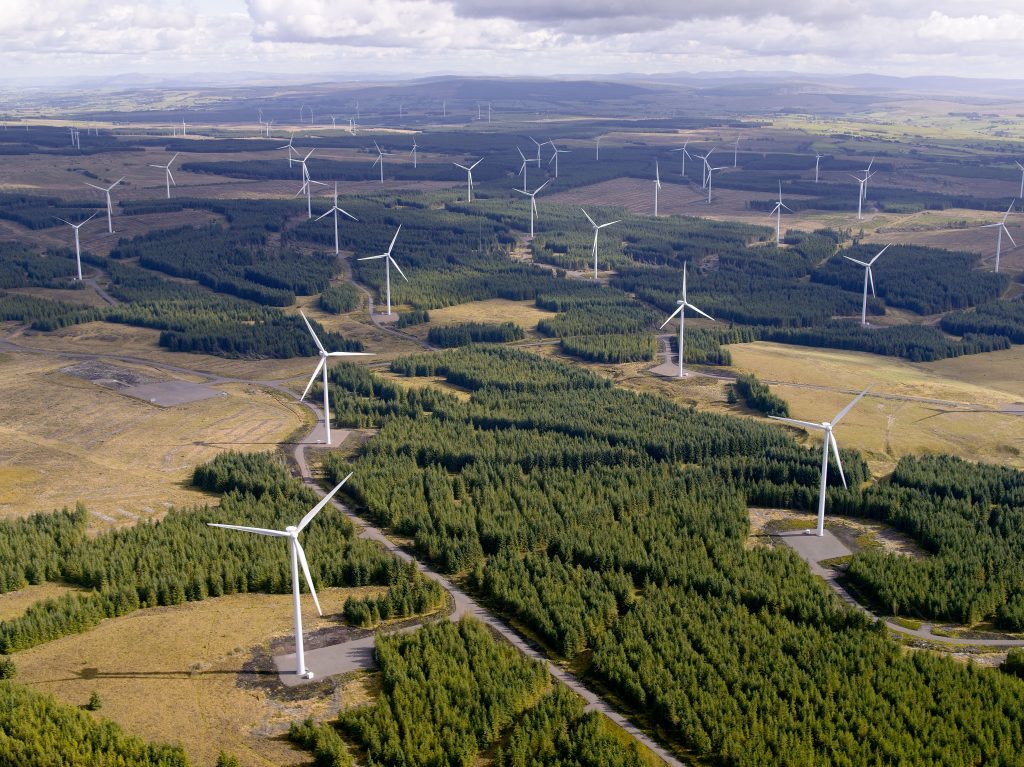
HOW much is Scotland’s beauty worth?
Is it worth wider mobile phone coverage for rural areas? Forests of wind turbines providing green energy? New roads giving better access to remote communities?
Saying yes to any of these projects inevitably means sacrificing an area of natural landscape.
The question is – is that a price we are willing to pay for progress?
In recent weeks The Sunday Post has looked at the issue of developments that affect Scotland’s landscape, from controversial Scottish Government proposals on mobile phone masts to the rapid expansion of wind farms.
Add to that the electricity pylons and roads that continue to pop up in the countryside and it’s no wonder critics have raised concerns that Scotland’s most picturesque, tranquil and beautiful spots are being irreversibly marred by eyesores, all in the name of progress.
Today, The Sunday Post examines exactly what’s at stake and allow experts on both sides of the divide to
put forward their points of view.
We need to value our country’s natural landscapes
By Helen McDade, Head of policy, John Muir Trust
Scots are becoming quite canny at spotting the difference between well-planned, sensitively-sited developments and those designed merely to put money into the pockets of shareholders.
For example, while most people probably think the Dundee Michelin factory’s turbines are interesting landmarks, many campaigners are genuinely concerned about the encircling effect of large wind developments around the Cairngorms National Park.
The John Muir Trust found that 800 industrial-height turbines were either built, consented to or going through the planning process in the National Park area.
If approved, there would potentially be three million tonnes of reinforced concrete buried in the bases – and that is expected to be left in the ground.
Sadly, planning authorities do not always properly consider the environmental evidence or recognise the genuine concerns of rural communities.
Surveys show the visual impact from pylon lines and hill tracks is particularly disliked. We need to make sure each development is justified and sensitively constructed.
The John Muir Trust, as a wild land conservation body, is particularly concerned about industrial wind developments which impact on wild landscapes – one of Scotland’s most loved features.
Although the Scottish Government brought in a welcome measure of protection with mapping and planning policy for wild land areas, there are still a number of major applications coming forward.
Residents and businesses in these communities are very dependent on tourism and share our concerns about the impact of poorly-planned industrial developments.
Their fears are about the degradation of our natural landscapes.
In a recent Mountaineering Scotland survey of members, 67% stated they preferred not to see wind farms when in the mountains.
Also, 22% said they avoided areas with wind farms when planning their activities.
Public money should be directed
away from industrial developments towards genuinely community-scale projects.
More support should be given to research and development into more advanced renewable technologies, such as tidal energy.
Scots are very proud of our natural landscapes – let’s value them.
Turbines crucial to our country’s economic growth
By Ross Martin, Chief Executive, Scottish Council for Development and Industry
Scotland’s emerging economy, driven by digital technology and supported increasingly by low-carbon infrastructure, must be more productive, more innovative and certainly more internationalist in its outlook.
In order to improve our economic performance and ensure we are resilient enough to cope with external shocks, such as the collapse of the banking system or the dip in the oil price, we
need to invest in our infrastructure.
Modernisation isn’t easy though. It often causes major disruption, can challenge existing interests and even sometimes questions the very way
we behave.
Whether it’s the disruption caused by major projects such as the upgrading of the central Scotland motorway network or the electrification of rail networks
or insulating our homes – making change happen is challenging.
Over the past few decades I’ve been involved, in some way or another, with three of the most controversial upgrades in our infrastructure, each of which have attracted disproportionate amounts of public and political attention.
The upgrading of the Beauly to Denny power line, the installation of a network of mobile phone masts, and the emergence of arrays of wind turbines across the countryside have all had a huge impact – but have been developed for the good of Scotland’s economy.
Yes, of course, each of these projects attracts public criticism and engenders great debate, but they are necessary features of our drive for economic growth.
Where they have fallen foul of public opinion is usually where the case for the change hasn’t quite been made, where the evidence of resultant improvements to economic performance hasn’t been clear, or when the national context hasn’t been adequately explained.
Scotland’s economy needs modern infrastructure in order to support the kind of growth from which we can build and spread prosperity, but we must begin to shape the debate around these projects as one where the economy and the environment are seen as two sides of the same coin, and not hopelessly competing interests.
Without growth, Scotland can’t have prosperity, and without shared prosperity and therefore increased levels of productivity, we can’t drive growth.
As power over certain aspects of economic responsibility and policy transfers, through the 2012 Scotland Act, from Westminster to Holyrood, so does the responsibility to drive growth, and spread prosperity too.
READ MORE
Windfarms Special Investigation: Turbines numbers could rise 10-fold
Windfarm debate: Turbines double in four years
‘Eyesore’ mobile phone mast proposals would harm beauty spots, say critics

Enjoy the convenience of having The Sunday Post delivered as a digital ePaper straight to your smartphone, tablet or computer.
Subscribe for only £5.49 a month and enjoy all the benefits of the printed paper as a digital replica.
Subscribe